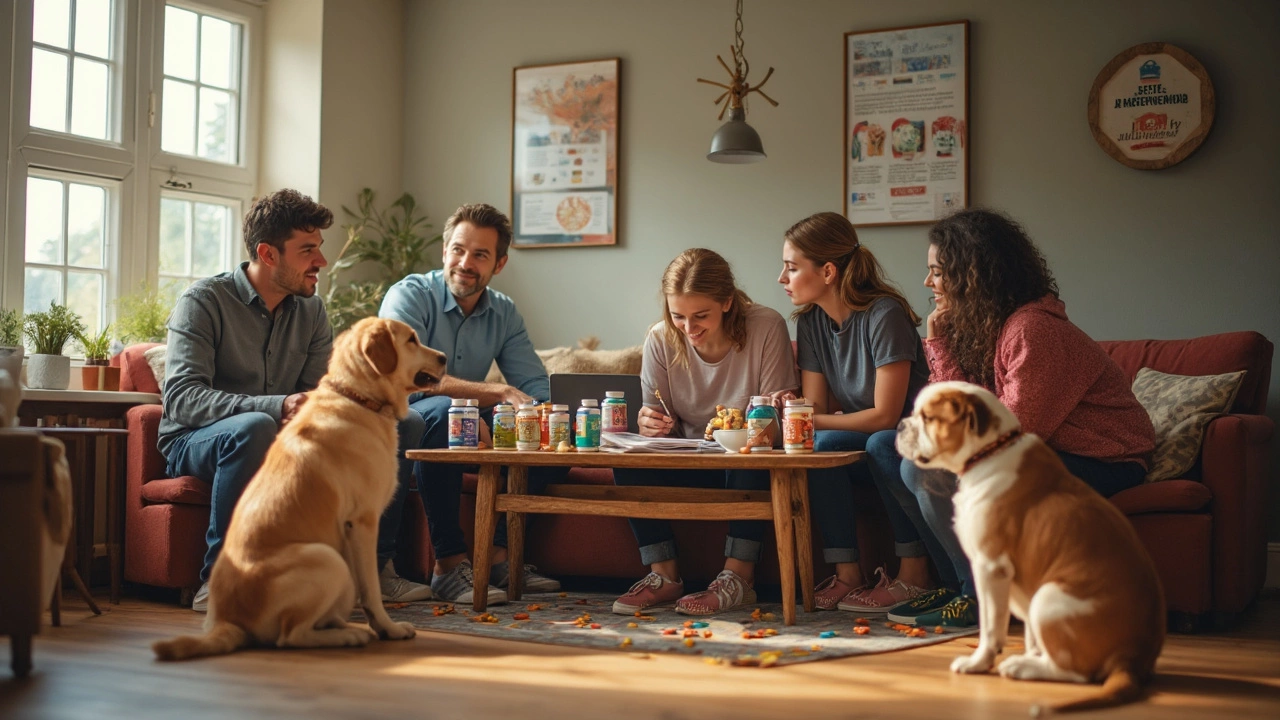Pet Wellness: Simple Tips for Healthy Dogs and Cats
Keeping a pet feeling great isn’t rocket science, but it does need a bit of know‑how. Whether you’ve got a bouncing puppy, a senior cat, or a horse that loves a good ride, the basics of wellness stay the same: good food, safe surroundings, regular check‑ups, and a little extra love.
Food and Nutrition Made Easy
First up, what’s on the bowl matters more than you think. For dogs, look for protein‑rich meals that meet AAFCO standards – brands like Beneful get a lot of buzz, but a quick ingredient scan shows whether they’re using real meat or just fillers. If your dog needs a splash of omega‑3, fish oil beats olive oil for joint health, while a dollop of plain Greek yogurt can add probiotics without upsetting their stomach.
Cat owners, you’ve probably wondered about pate vs. shredded textures. The key is variety: pate offers moisture, shredded mimics the hunt‑like experience. Pick a product with real meat listed first and limit artificial flavors. Indoor cats especially benefit from higher moisture diets to support kidney health.
Travel, Grooming, and Everyday Comfort
Planning a trip? Flying with pets isn’t as scary as it seems if you prep right. A TSA‑approved carrier, a calm pre‑flight walk, and a light snack 2‑3 hours before take‑off keep nerves low. For dogs that get anxious, a well‑rated calming collar may help, but watch for side effects like excessive drowsiness.
Grooming isn’t just about looks; it’s a health check. If your dog starts whining or even shedding tears during a brush, that’s a sign of stress. Keep sessions short, use gentle tools, and reward with treats. Most solo groomers can handle 4‑8 dogs a day, so book early if you need a pro.
Sleep matters too. Dogs that co‑sleep with their owners don’t automatically develop separation anxiety, but a consistent bedtime routine makes a big difference. Choose a spot that matches their size – a crate, a bed, or the foot of your own bed – and stick with it.
Don’t forget the little health tweaks. A spoonful of pumpkin can soothe a dog’s tummy, but monitor for sugar spikes. Switching a puppy to adult food should happen when they hit their breed’s maturity marker – usually around a year – and you’ll notice a steadier weight and fewer energy crashes.
Vaccinations are another cornerstone. A simple puppy shot schedule covers core diseases like parvo and distemper. Keep a handy chart and ask your vet about any breed‑specific boosters.
Lastly, keep an eye on supplements. Fish oil supports shiny coats, but over‑dosing can cause greasy stools. Always follow vet‑recommended dosages.
Pet wellness boils down to a few core actions: feed balanced meals, stay on top of vet visits, make travel and grooming stress‑free, and give your buddy a comfy place to rest. Follow these tips and you’ll see fewer vet trips, happier tails, and a healthier pet overall.
Do Dog Supplements Really Work? The Honest Scoop on What Helps and What’s Hype
Dog supplements are popping up everywhere, promising shinier coats, calmer nerves, and longer lives for our furry friends. But not every product does what it claims. This article cuts through wild promises and spotlights what dog supplements really can (and can’t) do, backed by research and real-world experience. If you’re thinking about adding something extra to your dog's bowl, you’ll find practical tips and science-based facts right here. Because when it comes to our pups, we're not messing around with guesswork.
